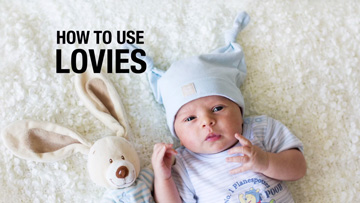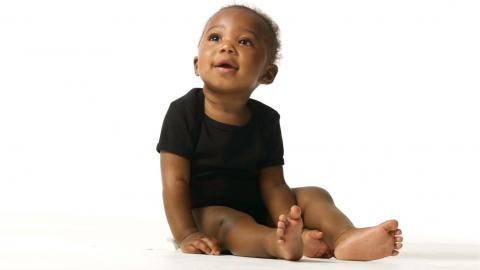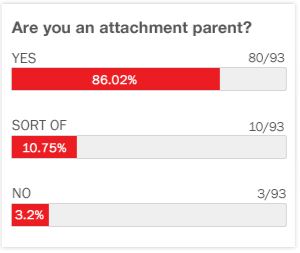How to use a lovey.
All parents know that sleep is an enormous issue, and loveys, or blankeys -you might hear them called transitional objects-they fall into the category of what we call helpful sleep associations; helpful meaning that your baby can get to it herself in the middle of the night and she doesn't need you to come in and do something for her. Babies are very tactile, and even when they're very young, you start to see them starting to finger things. You start to see them moving their fingers. You start to see them,-maybe when you're holding them-they're touching your shirt or your skin. You start to see them touching their own hands. So, if your baby's swaddled you'll have to wait until they're no longer swaddled, and if they're not swaddled then you can start using a lovey at any time. I'd like to describe how to use a lovey in two stages. The first stage is creating the attachment of your baby to the lovey and the way you do that is by keeping the lovey around your baby all the time. When you're holding them, when you're feeding them, when they're in their car seat- wherever they are, you put it where they can touch it. What you're looking for is seeing them starting to finger it. Babies will often rub it all over their face. The moms and dads know when the baby starts to like their lovey, it's clear to them. Once you know that, once you see that your baby loves their lovey and loves to finger it and rub it, what stage two is, is put the lovey in their bed and leave it there. And what this does is it, it maintains its potency. Now, when they get into bed at night, they're so happy to see their lovey and they just roll over and grab it and it becomes an incredibly helpful sleep aid for them. So, an important thing to know about loveys is the size. They're small, they're usually made of a light or fairly breathable fabric, usually no more than about 12 inches on either side. This is an example of a gauzy lovey with a satiny ribbon. Babies tend to really love these little headed loveys like this little elephant or this little monkey. For some reason, these tend to be the ones that most of the babies attach to. But you can really, you can really use anything that they start to finger. When my son was a baby his lovey became his cotton burp cloth, and I didn't really know what was happening, but he showed me that he became attached to that, that little cloth diaper.
Therapist Julie Wright, MFT talks about choosing a lovey for your baby to facilitate sleep
Related Videos
Transcript
Expert Bio
More from Expert
Julie Wright, MFTPsychotherapist & Author
Julie Wright, MFT is a marriage and family therapist with an extensive background in infant mental health and early childhood development. She trained at Cedars Sinai Early Childhood Center and co-developed a program for parents and babies from 0-3 at LA Child Guidance Clinic. Julie specializes in mindful parenting, sleep issues and attachment theory. She also works in private practice with infants, children, parents and adults. Julie lives in Los Angeles with her son and often visits family on the east coast.
Julie has written the book, "The Happy Sleeper," Penguin 2014 with her colleague, Heather Turgeon, MFT. The Happy Sleeper gives the topic of baby sleep a fresh perspective. Their approach moves beyond old school ideas like “sleep training”—it’s grounded in research and shaped by new thinking. The Happy Sleeper gives you a clear, easy-to-follow system for transferring the role of independent sleep to your capable child, as they have done for thousands of families in their clinical practice.




 GET ACCESS TO ALL PREMIUM CONTENT WITH NO ADS FOR $4.99/MONTH
GET ACCESS TO ALL PREMIUM CONTENT WITH NO ADS FOR $4.99/MONTH




Login or Register to view and post comments